 Evolution is repetitive, especially if it produces adaptations that work well. If it’s all about survival, spines do the trick throughout the mollusk world.
Evolution is repetitive, especially if it produces adaptations that work well. If it’s all about survival, spines do the trick throughout the mollusk world.
Scorpion Without a Sting
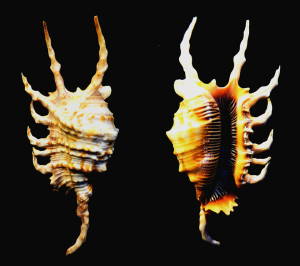
This leggy shell belongs to a group of gastropods called the Spider Conchs, and this particular species is the Scorpion Spider Conch (Lambis scorpio), which can neither bite nor sting. The group gets its name from the leg-like extensions along the edge of the expanded opening of the shell (aperture) that serve no function in locomotion. Living in the intertidal and shallow subtidal mud, sand, and coral rubble where the surge of waves can be intense, researchers believe these spines serve to prevent the snail from rolling on the bottom. As an added benefit, long, thick spines could make it more difficult for mollusk-eating fish to eat the Scorpion Spider Conch. But as nobody has ever conducted any field studies or laboratory simulations of how these spiny shells actually function, they are untested assumptions. If scientists knew everything, there would be no work for graduate students.
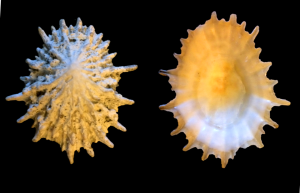
Spiny Shield
Limpets rarely get much respect among malacologists, let alone shell collectors, yet they have a subtle magnificence. I bring you the Bearded Limpet (Scutellastra barbara; Patellidae). Mollusks that live in the intertidal zone are the cage-fighters of the invertebrate world. You’ve got to be extra tough to withstand tons of force from a crushing wave, survive the hot and dry exposure from low tide, and have sure-fire ways to avoid being eaten by predators both on the land and in the water. This shell has a series of strong ridges that radiate out from the crest of this pyramid-like shell to the outer margins of the shell. Architecturally, these ridges act as girders not just strengthening the shell, but directing the power of a breaking wave to the outside edge of the shell. This causes the power of the wave to be divided across the shell along these girders, but since these ridges end in spines that are in contact with the rocks, the wave force actually causes the shell to be pressed against the rock, holding it in place as the wave is breaking around the shell. Further, the bumpy, spiny edge of the shell could also make it harder for limpet enemy number one – the African Oystercatcher – to eat it. The bill of the oystercatcher is shaped like the flat end of a standard screw driver, and the oystercatcher wedges this sharp edge under the shell and pries it off, flips it over, and scrapes out the fleshy tidbits. The uneven spiny edge makes it much more difficult for the oystercatcher to slip the bill underneath the shell, and theoretically a few more Bearded Limpets survive to pass on this morphology to the next generation.
Twice the Spines, Twice the Fun

The Spiny Oysters (Spondylus: Spondylidae) such as this dandy Spondylus foliaceus, are a widespread group in tropical and subtropical waters, shallow and deep seas, with a diversity of colors and shapes, but they are all united in the spines, thorns, and prickly bits that cover their shell. The function of these spines, as imagined by unimaginative malacologists, it to protect the oyster from piscine predators, but that’s what they always say. Three other possible ways that could potentially increase the survival of the spiny oysters are as follows: (1) these spines could act to deter the settling of barnacles, anemones, and even other oysters on their shell. Acting as a figurative layer of barbed-wire the spines keep other large invertebrates from plopping-down on their shell and growing on them, weighting them down, and competing for food; (2) the expanded surface area these spines provide could promote the settlement and growth of other small marine organisms. Algae, bryozoans, and encrusting sponges, could provide a natural camouflage to better conceal these oysters on the sea floor; and (3) these spines could act as a ‘baffle’ to slow water flowing around the clam. As you all remember from your hydrophysics courses, moving water carries objects (sand particles, plankton, delicious detritus, etc.), and the faster the water moves, the larger particles and the greater number of particles the flow can carry. If there are impediments to water flow, such as dozens of spines on an oyster’s shell, the water slows and drops its particles. So, the spiny oyster’s spines may act to slow moving water around it, and that water would drop its suspended detritus and plankton right around the edge of the shell where the oyster is drawing in that water to filter out a meal. Or maybe it’s just to deter fish from eating them after all.
Shell Superstar
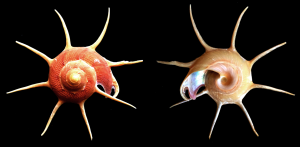
Behold the Japanese Star Turban shell (Guildfordia yoka; Turbinidae), a flat and radially spiny gastropod from the western Pacific Ocean that looks like a nasty weapon hurled in a kung-fu movie. One hypothesis concerning their spines is that it helps to distribute the weight of the snail outward so that it doesn’t sink into the soft deep-sea muds where it lives. Where broad, flat spines might accomplish this feat, their thin, narrow spines would seemingly cut into the soft mud, offering no real support for the weight of the shell in the center. But dang it if those spines don’t give up clues themselves; because they often show signs of breakage and regeneration, like one of the spines seen in this shell, they are likely for protection from predators. If the spines don’t actively repel foraging deep-sea fishes by a painful jab in the roof of the mouth, the spines may simply make the snail too big to even swallow in the first place. When the Japanese Star Turban survives a potential attack with a few spines broken, the snail will repair or regrow the protective spines to live another day.
Spines Fit for a Goddess
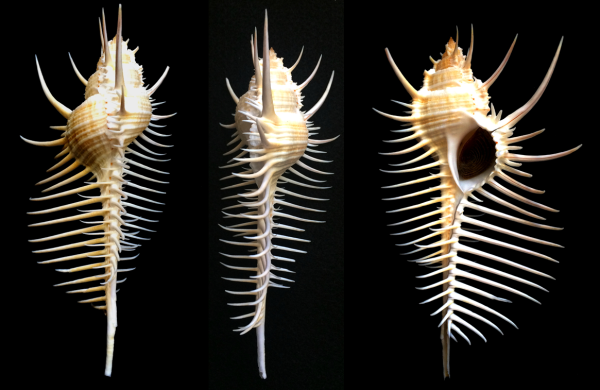
Sorry that I didn’t mention there would be a final exam for the end of this post, so sharpen that No. 2 pencil. Spines on shells, much like a Swiss army knife, can serve one or many functions. They deter predators, strengthen the shell, and support the animal in various ways. But this gastropod shell, the Venus Comb Murex (Murex pecten; Muricidae) is the most glorious example of spines. As the name might suggest, it is the natural comb that keeps a sexy Roman goddess’ hair smooth and manageable. After all, as legend has it, Venus was born of sea foam, and you can imagine what ruin the tides can do to her hairdo. But no, none of the ancient texts or depictions in paintings, mosaics, or bas-reliefs show Venus using this shell as a styling tool. So then, what evolutionary, ecological, and/or morphological function do you expect the spines to serve? Watch the video below for some clues:

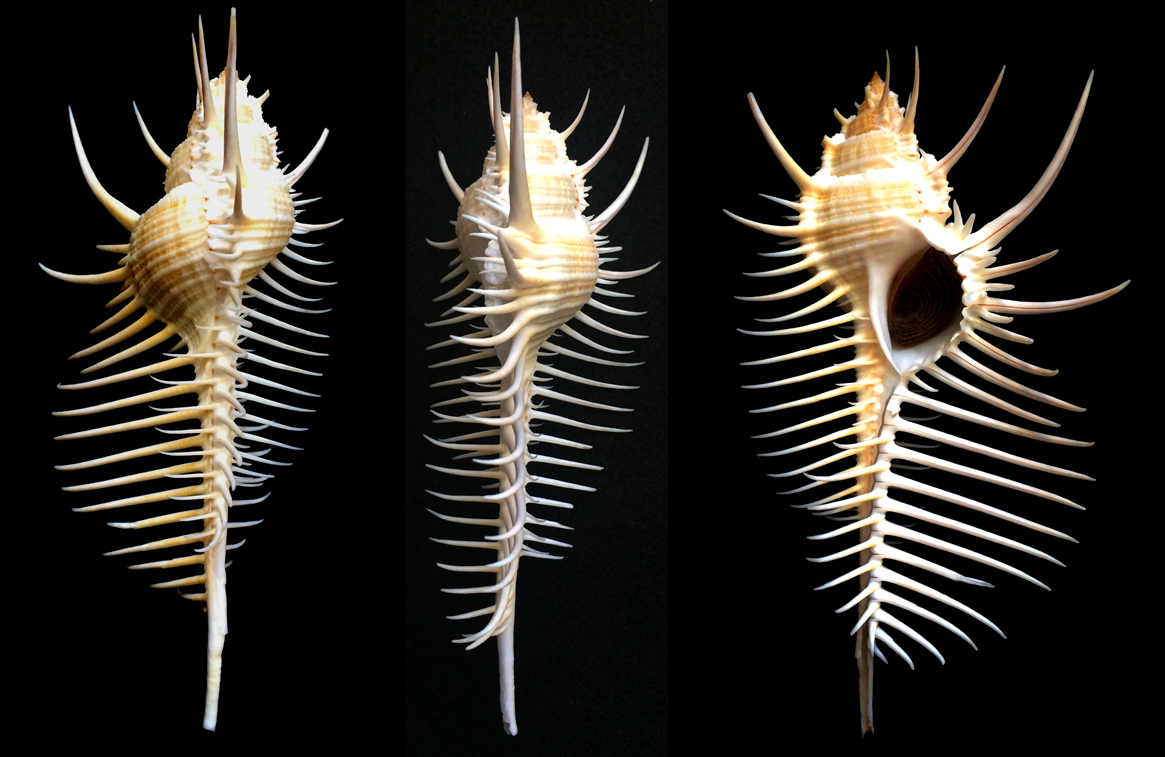
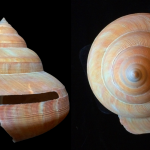
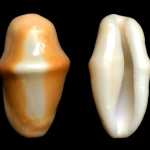
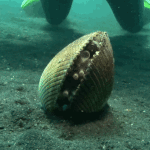


Do the the spines of Guildfordia yoka actually regenerate after they’ve left the aperture? That would be shocking and amazing!
Excellent question Nicole. The biology of this species is barely known, and no studies have been done in their shell development. However, where you see apparent regeneration in the spines, it’s almost always in the spine nearest the aperture (as in this specimen), conceivably close enough to the mantle to secrete new material for a fix. In my own non-scientific perusal of Guilfordia specimens, older spines that are much farther away from the aperture usually show no sign of regeneration when broken, This could mean that spines nearest the aperture serve some immediate protection to the snail (in or out of the shell), and as the shell grows, the spines farther from the aperture may not provide direct protection to the animal when it is extended out the aperture. Or more likely, the older spines are too far away from the mantle for any repair or modification via secretion of new material. Merely speculation, so let’s do some research you graduate students!
Thanks, I’m working of development of shell sculpture for my PhD. Are the spines hollow? I’m trying to visualize how the mantle would have to deform through the spine to regrow its tip.
Those shells certainly provide protection. I once accidentally kneeled on a spondylus oyster at the beach and was picking spines out of my knee for a week.
Personally i think the mantle does´t deform. Have you looked at the possibilities of an over expression on some genes that could reflect this.
Yeah, I am actually, its not a simple task.